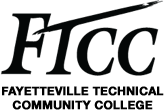The N.C. Community College System announced Monday that it is joining in the celebration of Community College Month, a dedicated national event each April focused on spotlighting the hard work and achievements of community colleges.
“The Community College System is key to the recovery and growth of the state’s economy,” said Thomas Stith, president of the NCCCS, in Monday’s release. “We are very pleased to participate in this national awareness month to showcase North Carolina’s crown jewel – the Community College System.”
In Monday’s release, the NCCCS shared several points of achievement about the role the state’s 58 community colleges play in serving their student populations while bolstering the state’s economy.
According to a recent report presented to the State Board, the 58-college system contributes about $19.3 billion to the state economy annually, an impact that supports 319,763 jobs. The report said that for every dollar invested in North Carolina’s community colleges, taxpayers get back $1.90 in added tax revenues and public sector savings. The report contained good news for community college students, too, as they enjoy an average rate of return of 22.3 percent on their college investment.
The NCCCS’s release highlighted the importance of corporate partnerships in stimulating economic development. For its part, Fayetteville Technical Community College has a number of corporate and community partnerships, including Red Hat-focuses certification training courses, a longstanding relationship with Caliber Collision and a recent development in its partnership with Cape Fear Valley Health that will allow FTCC’s Certified Nursing Assistant students to have their college costs covered in exchange for a 3-year work agreement with CFV.
The release noted that, after a dip in enrollment during the pandemic, community college enrollment is on the rebound. N.C. community colleges saw a 2-percent increase in enrollment in the fall 0f 2021, with 33 of the 58 members reporting increases. Basic skills education enrollment increased 40 percent, and short-term workforce education rose 22 percent.

